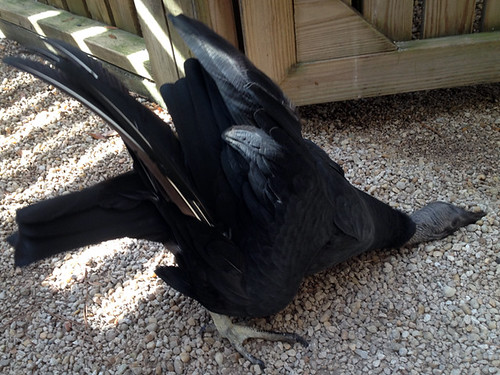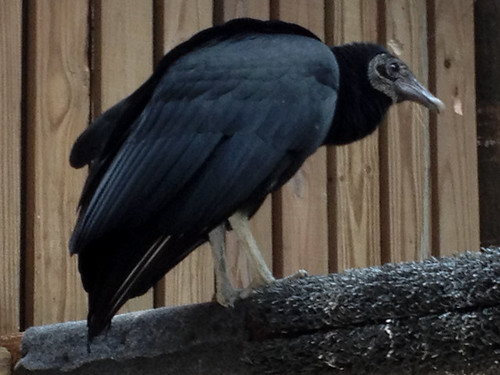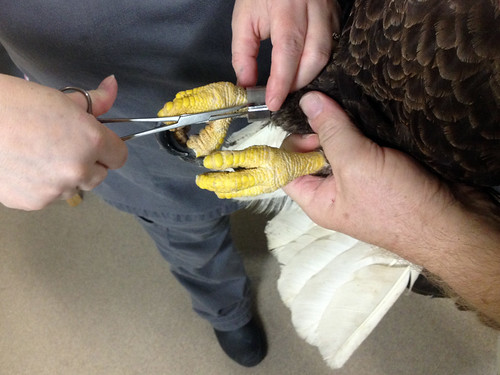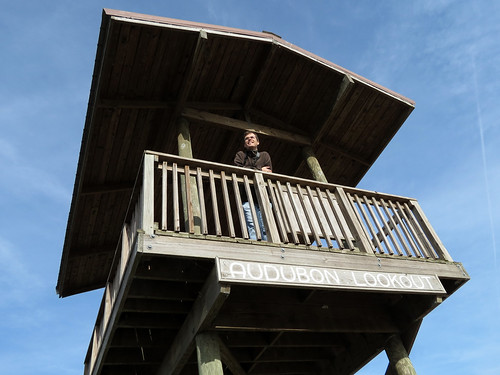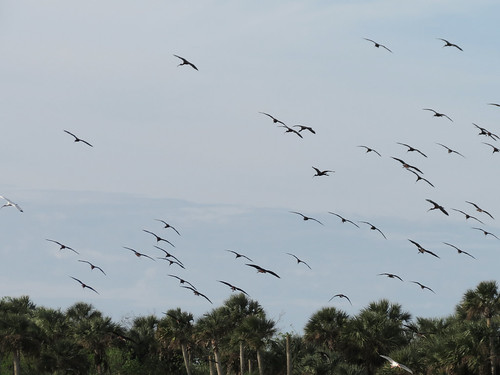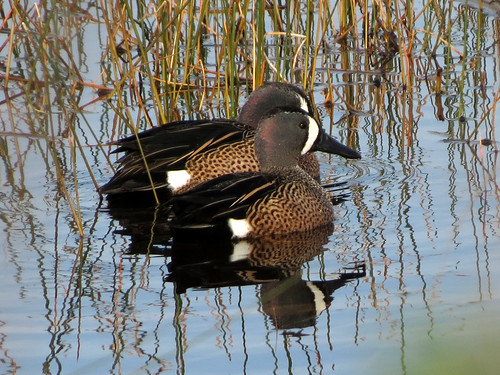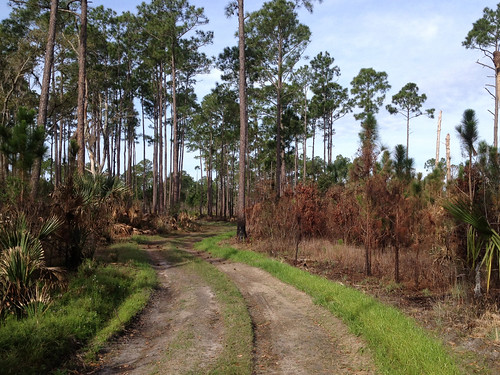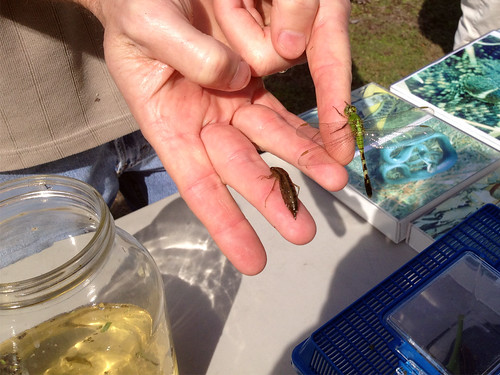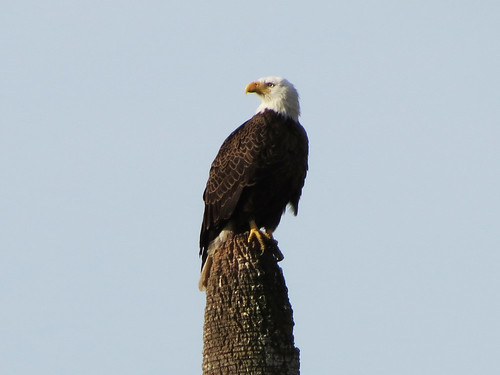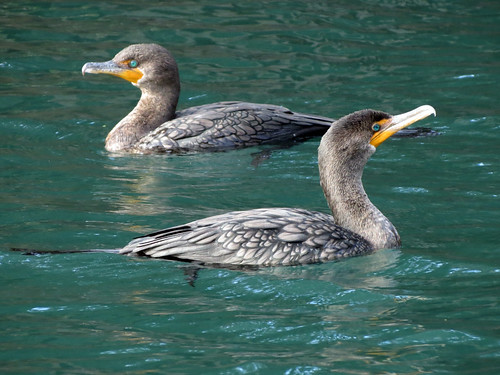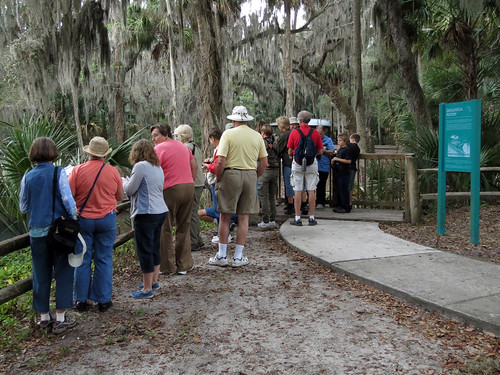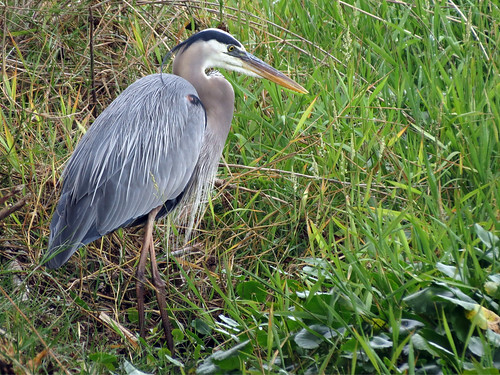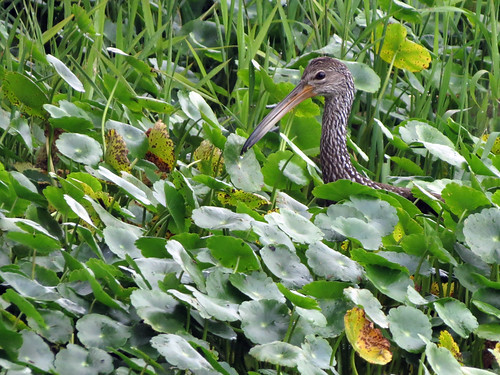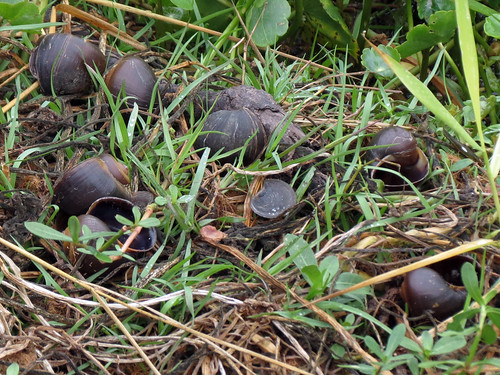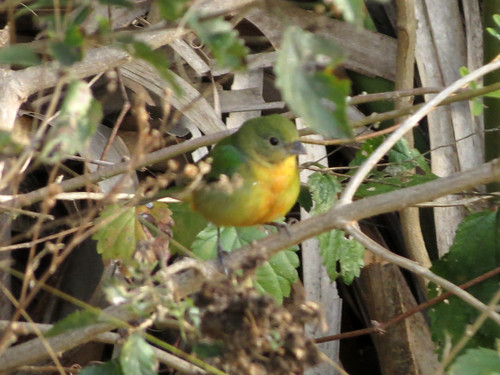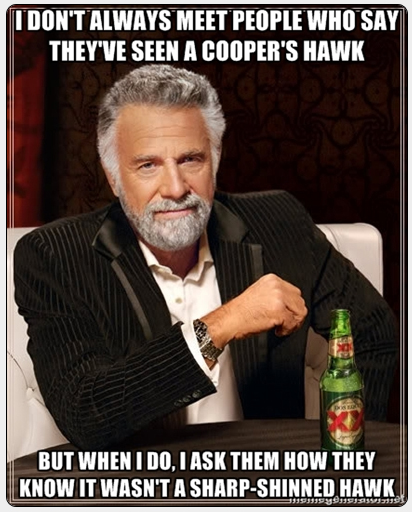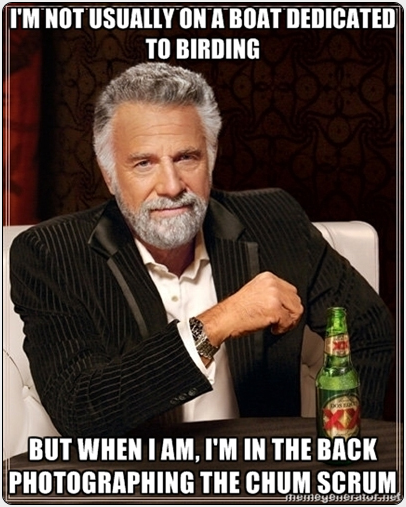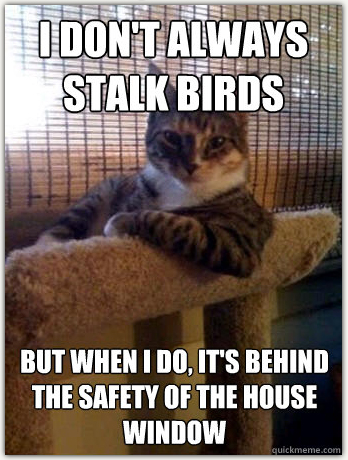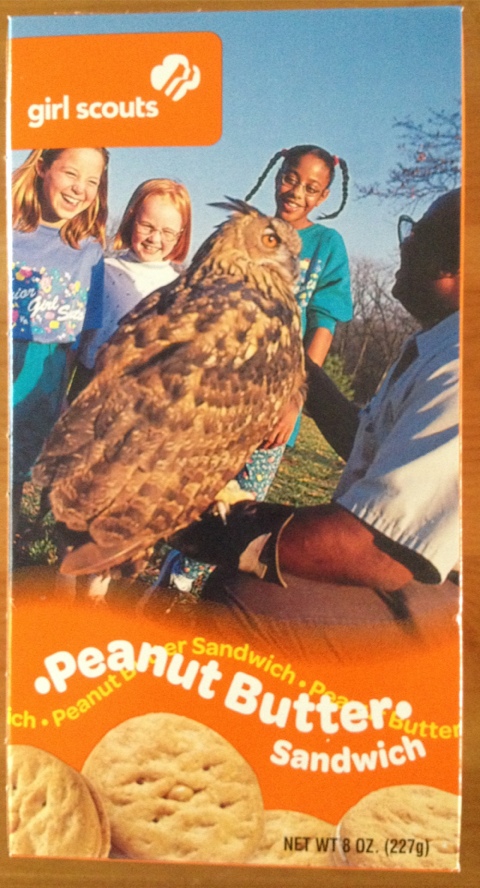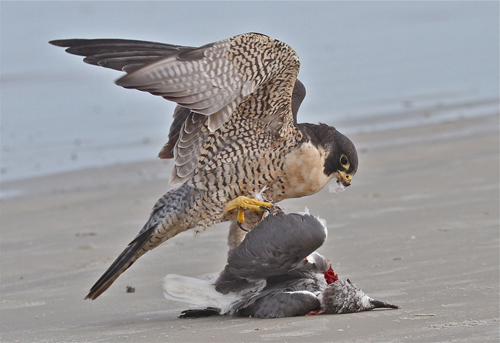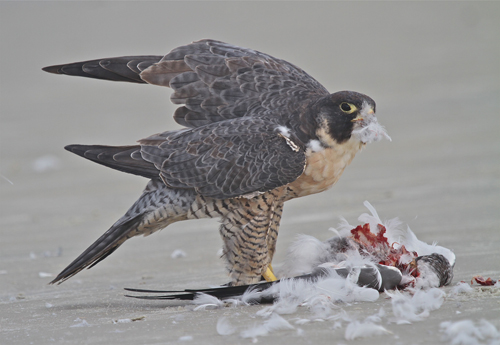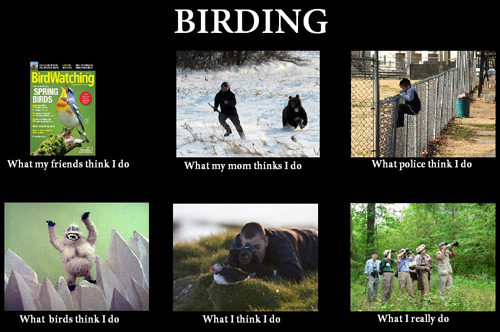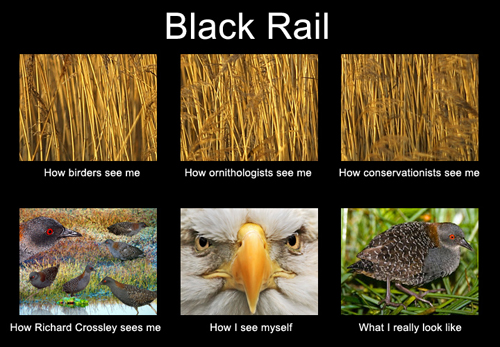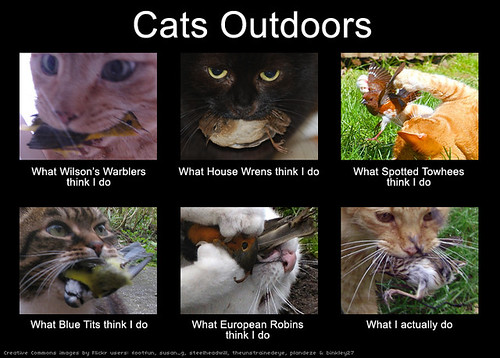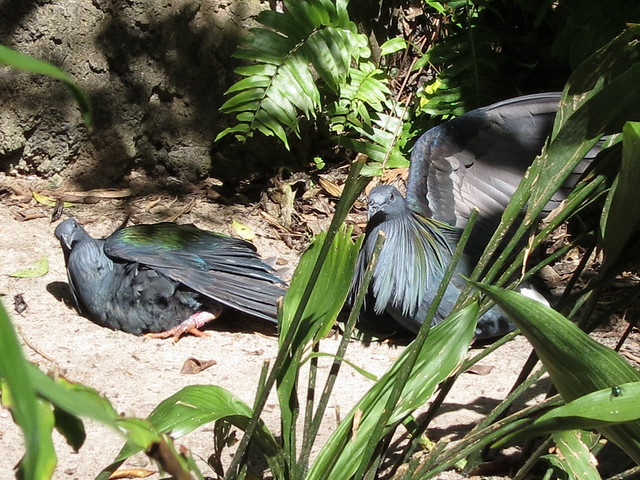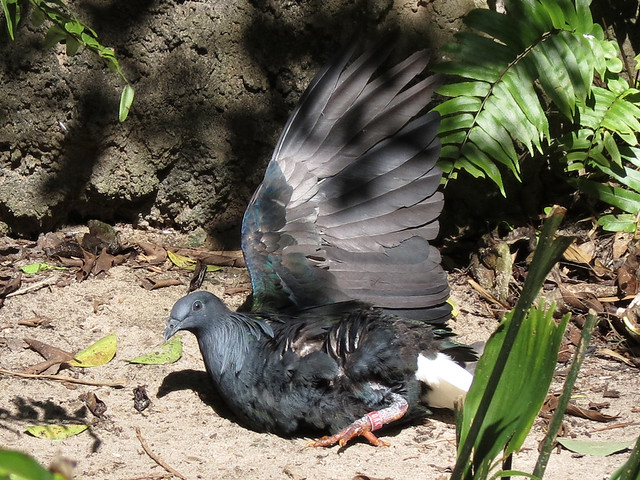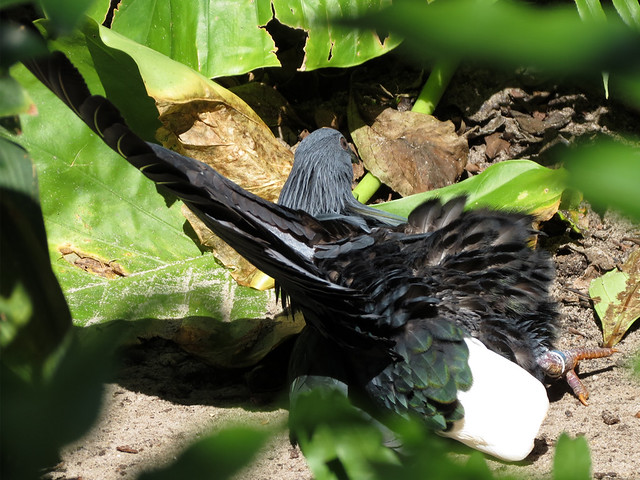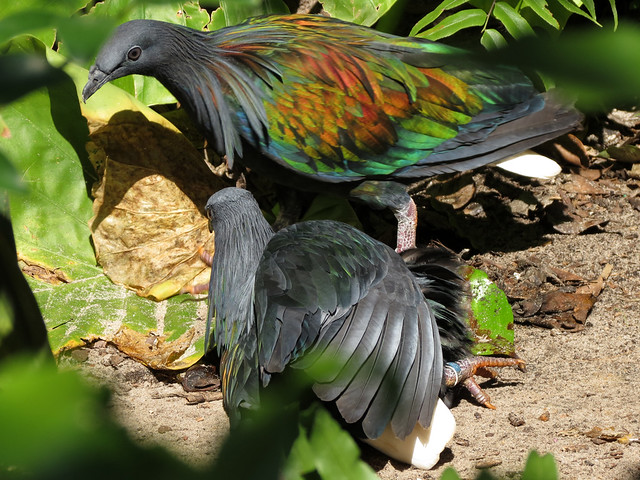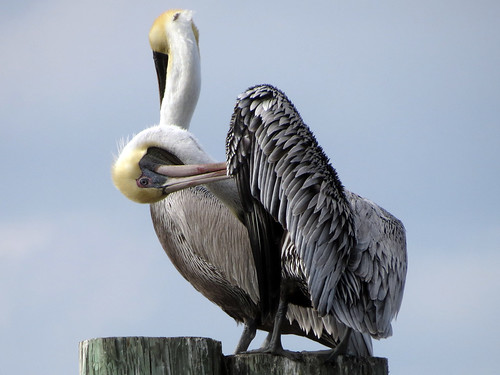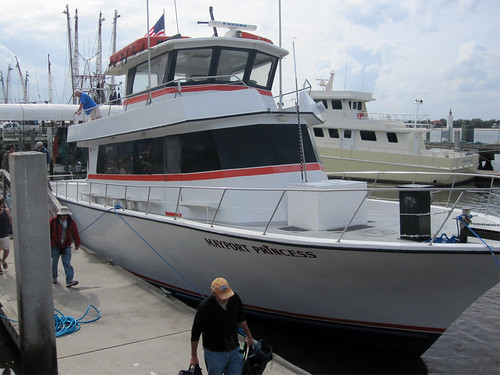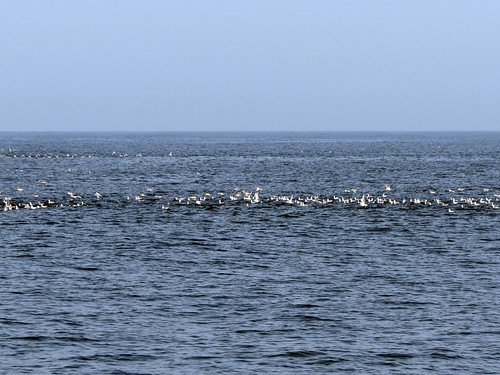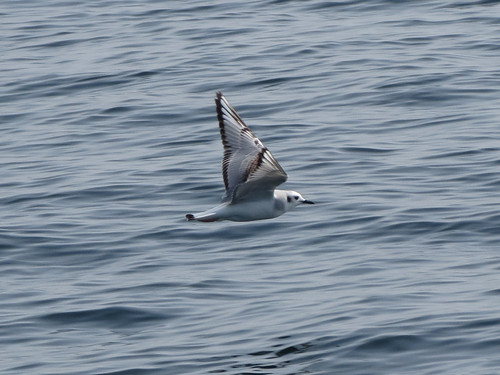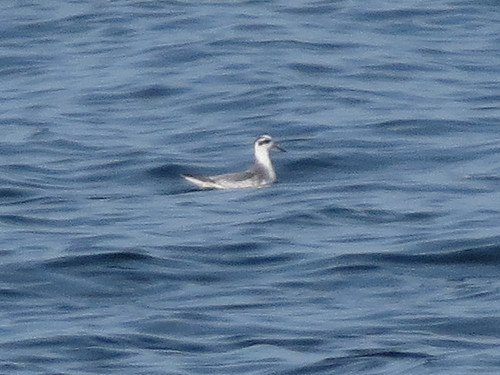A new volunteer gig
I started volunteering at the Audubon Center for Birds of Prey at the beginning of February. One morning a week I help with regular maintenance tasks like cleaning up after rehab birds, cleaning up after education birds, and cleaning up after display birds. 🙂 Yes, there is a lot of cleaning. But I also get to spend some time with some gorgeous birds of prey. The people there are pretty nice, too, but so far I’ve only taken photos of the birds. All of the pictures/video in this post were taken with my iPhone.
This beautiful male Barred Owl was in a rehab mew one day when I was cleaning.
On my first day I was invited by a fellow volunteer to “water the Ospreys.” Ospreys are typically high-strung, and the three birds on display were very vocal while we were in their space – until they were being watered. These fish-specialists love the water and remained calm as I gently sprayed them with water from the hose. Here are a couple of wet, happy Ospreys.
On my first day I also got to meet Uffda, a Black Vulture who seems to have a chronic sneezing problem. She got her name from the funny nasal noises she makes. In this photo she is scratching her neck on the rough gravel.
This beautiful adult Bald Eagle has permanent injuries that leave him non-releasable. He is suffering through repeated issues with his wing which need to resolve before he can be placed with an education facility. He has a very sweet demeanor for an adult wild Bald Eagle; I couldn’t take my eyes off of him while I cleaned up his small rehab mew.
On my second day of volunteering I got to meet a rascal Black Vulture called Jeff. Jeff was presumed male until she laid an egg years after being placed at the Center. While I was cleaning up in her building I left a plastic bag with discarded food items in the hallway. Somehow Jeff managed to reach outside of her mew and snatch the bag. You can see how close together the slats are – I don’t know how she did it! Later I gave her a squeaky dog toy to play with.
After I was done with my duties on my second volunteer day, I took a little walk around the grounds of the Center, where I found one of those water-lovin’ Osprey having a bath.
On February 23rd the Center released their 441st Bald Eagle. I was lucky enough to be invited to watch the eagle get caught up in the flight chamber. Once the bird was secure I got to place the hood over the eagle’s eyes. The bird was brought inside where it was weighed and later (in a separate building) a federal band was placed around one of its legs.
Last Thursday I got to clean up the display mews. The birds on permanent display in these mews have injuries that prevent their release back into the wild. As far as I understand, none of the display birds are glove-trained, but they are certainly used to having their enclosures cleaned out each day. There are thirteen separate mews holding sixteen different species (if I am remembering everyone!).
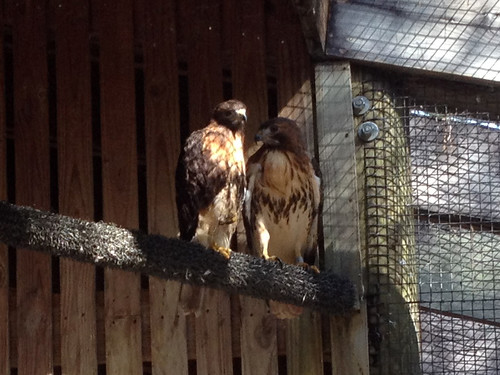
Luke and Lynn, Red-tailed Hawks
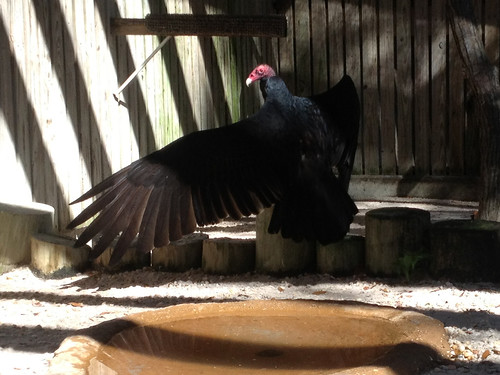
Charlemagne the Turkey Vulture gives me the stink eye

Dancer (I think), Mississippi Kite
The Audubon Center for Birds of Prey, located in Maitland, Florida, treats up to 700 birds of prey each year. You can follow them on Facebook here. This post reflects my own experiences as a volunteer; any errors regarding the Center and their patients or permanent residents are purely my own – and I do expect there might be some errors as I am still learning my way around the center and getting to know all of the birds. Further, any opinions expressed here do not necessarily reflect those of ACBOP.



